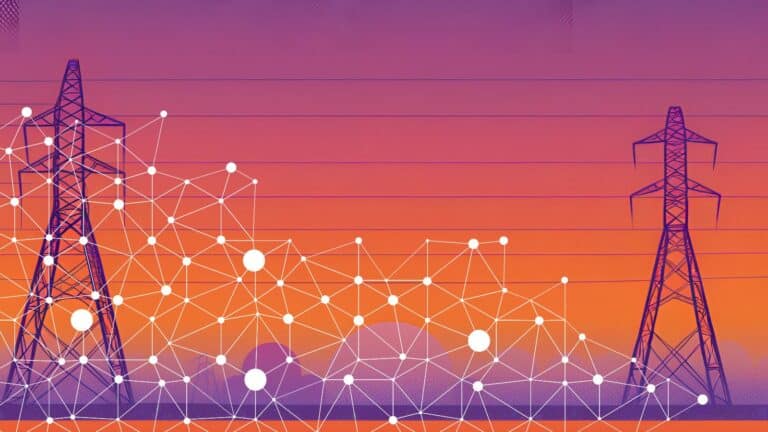This website uses cookies as well as similar tools and technologies to understand visitors’ experiences. By continuing to use this website, you consent to Columbia University’s usage of cookies and similar technologies, in accordance with the Columbia University Website Cookie Notice.
Energy Explained
Insights from the Center on Global Energy Policy
This Energy Explained post represents the research and views of the author. It does not necessarily represent the views of the Center on Global Energy Policy. The piece may be subject to further revision. Contributions to SIPA for the benefit of CGEP are general use gifts, which gives the Center discretion in how it allocates these funds. Rare cases of sponsored projects are clearly indicated.
For a full list of financial supporters of the Center on Global Energy Policy at Columbia University SIPA, please visit our website at Our Partners. See below a list of members that are currently in CGEP’s Visionary Circle. This list is updated periodically.
The idea of a global electricity market has always been a bit of a misnomer. [1] Fuels such as gas, oil, coal typically travel around the world to fuel power generation; the sun travels ever farther through space and time. In contrast, electricity itself travels on a regional basis. Most transmission systems are local in nature and at most, stretch over several hundred miles. [2]
Two factors are changing power markets with globalization, emerging at both the supply and demand end of the value chain. At the supply end is China, which is upending the status quo in power generation by exporting copious amounts of renewables infrastructure. What is happening here is transparent and clear: China is using renewables, regardless of profit, to take its seat at the global energy table. [3] At the demand end, the focus on intermittency and reliability risk has been unrelenting.
Much less focused on has been the ever-increasing mobility of the power demand itself. From global data centers and cryptocurrency miners to artificial intelligence (AI) users, incremental power use is increasingly moving around the world on a real-time basis in pursuit of the cheapest kilowatt-hour (KWh). As it does, it is undermining traditional planning on load growth and making it more difficult for policymakers to assess risk to their constituents.
Power Demand Globalizes at the Push of a Key
Power demand is becoming more fluid in its pursuit of the least expensive place to operate, as the needs for instantaneous computing transcend traditional physical boundaries. Traditional uses of power in the industrial, residential, and commercial sectors had been dictated by the fixed location of the user, while pinning down use in the world of data centers or AI is not geographically anchored.
Herein lies the conundrum. Two worlds in energy are colliding and struggling to find a common language to communicate: On the one side sits commodity-driven energy markets, and on the other sits government- or utility-driven power markets. While traditional energy sources such as oil, gas, and coal remain essential commodities, the rise of renewable energy technologies and what is now migratory power demand is disrupting established market dynamics.
The question of whether electricity is even a commodity, as opposed to a utility, is one worth asking, as a wide range of market designs exist around the world that suggest either definition could apply. Until recently, it was the fuels for power generation – oil, gas, and coal – that moved around the world as a commodity, while the electricity would be produced at the destination of these fuels and distributed locally. While this structure is still true, the use of the power is now beginning to migrate, not in physical form, but in terms of use cases. If the cost of power becomes too high in the given market, the load tied to all forms of computing is shifting to less expensive areas. Conversely, when power prices drop into negative numbers as is now happening more frequently, these same loads are migrating into markets. One could argue that the market forces attracting and repelling such types of power use will help counter the riskier aspects of relying on intermittent power by chasing away use at times when prices are highest and peak providers such as batteries on gas units step into the supply void.
As this type of migratory power demand based on price becomes a larger and larger portion of power demand, pinning down what will be peak usage and what investments should be made to meet this peak may become much more difficult to assess. The speed at which demand can appear and disappear from a local grid must now be factored in, along with more extreme weather as conditions adding to the grid’s stability. Record amounts of demand will be appearing and disappearing on a real-time basis when based on price, and generation will have to adjust to balance this increased amount of volatility.
In most power markets around the world, the role of power stretches well beyond the marketplace. Market design in most countries in the world operates based on heavily regulated power markets, where the price is determined by regulated tariffs, mixed with government subsidies that allow governments to theoretically use electricity both positively as a social welfare tool and negatively as a political weapon. Market design options include vertically integrated utilities, wholesale power markets, retail electricity markets, capacity markets, spot markets, and most recently renewable energy certificate markets.
As excess solar and wind capacity pops up around the world, so will power use tied to AI and data centers, as it offers flexible demand. The caveat is that it also offers an alternative to storage, which suggests that a balance will need to be struck among use cases to keep the lights on, the EVs running, and the natural language processing.
CGEP’s Visionary Circle
Corporate Partnerships
Occidental Petroleum Corporation
Tellurian Inc
Foundations and Individual Donors
Anonymous
Anonymous
the bedari collective
Jay Bernstein
Breakthrough Energy LLC
Children’s Investment Fund Foundation (CIFF)
Arjun Murti
Ray Rothrock
Kimberly and Scott Sheffield
Notes
[1] The following paper comes out of a keynote presentation delivered at Penn State University on April 15. The conference was “The Geopolitics of Cross-border Electricity Grids.”
[2] While power is capable of flowing long distance, Typical voltages for long distance transmission are in the range of 155,000 to 765,000 volts to reduce line losses. A typical maximum transmission distance is about 300 miles (483 km). The longest high voltage AC transmission line in the United States is the “Path 27” transmission line, which runs from the Pacific Northwest to Southern California. It spans approximately 846 miles and is a crucial part of the Western Interconnection grid, helping to transmit electricity over long distances.
[3] https://www.carbonbrief.org/analysis-clean-energy-was-top-driver-of-chinas-economic-growth-in-2023/#:~:text=Including%20the%20value%20of%20production,expansion%20of%20GDP%20in%202023.
More on Energy Explained Energy Explained
What the Conflict in the Middle East Means for China’s Natural Gas Supply Security
China’s dependence on the energy supplies that move through the Strait of Hormuz makes it especially vulnerable to any possible closure of the waterway by Iran in retaliation for attacks by Israel and the United States.

Q&A: An Energy Take on the Current State of the Iran-Israel-US Conflict
The conflict between Iran, Israel, and now the United States has yet to disrupt energy supplies to global markets.

US Exports and Domestic Gas Use Face Off for Incremental Supply
Calls to "Drill, baby drill" are back with Donald Trump's return to the White House, and for US natural gas production, the catchphrase might also be a necessity over the next three years if demand for the fuel grows as steeply as expected.

Can AI Transform the Power Sector?
AI’s growing power demand has received enormous attention in recent months. In many places, the lack of power supplies is an important constraint on the growth of data centers to train and run AI models.

Relevant
Publications
The Potential Contribution of Enhanced Geothermal Systems to Future Power Supply: Roundtable Summary

Addressing Energy Insecurity via Utility Ratemaking
About one in four American households experience some form of energy insecurity. Within this group, Black, Indigenous, Latine, low- and moderate-income (LMI), and other disadvantaged communities face a disproportionately higher burden.



